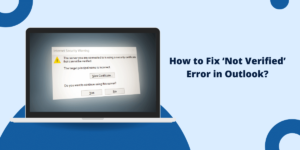What Does “There has been a Critical Error on This Website” Error Mean?
Encountering the message “There has been a critical error on this website” can be frustrating and concerning for any website owner. This generic error indicates a major technical issue that is preventing your site from loading properly.
The good news is that while this error appears dramatic, it is usually fixable with some targeted troubleshooting. Typically, it points to a problem with your site’s PHP code rather than something catastrophic.
In this guide, we’ll explain the common causes of the “critical error” message and walk through various solutions to try. With some diligent debugging, you can track down the source of the problem and get your site back up and running again.
Key Takeaways
- The “critical error” message usually appears due to a problem with the website’s PHP code.
- Common causes are misconfigured PHP settings, syntax errors, corrupted files, database issues, etc.
- Solutions involve checking error logs, disabling plugins/themes, restoring backups, reinstalling PHP, etc.
- Hardly refreshing the browser cache, clearing cookies, and trying a different browser can also help resolve it.
- For WordPress sites, reuploading theme/plugin files and resetting to default settings may fix the error.
- If the issue persists, contact your web host or a developer to troubleshoot the cause further.
What are the Common Causes of the “Critical Error” Message
The “critical error” message stems from a PHP script error on your site. PHP is the programming language that WordPress and many other content management systems and web frameworks use. Here are some of the most common triggers for this vague but alarming notice:
- Misconfigured PHP Settings: The PHP configuration settings on your web server could be incompatible with your site’s code, preventing PHP from running properly.
- PHP Syntax Errors: Your custom PHP code, plugins, or theme may contain errors like typos, invalid syntax, etc. This stops PHP from executing.
- Corrupted Theme/Plugin Files: Plugin or theme files corrupted during an update or upload can create PHP errors. Outdated, abandoned plugins are a particular risk.
- Exceeded Resource Limits: Resource limits related to PHP memory, execution time, or file sizes being exceeded cause failures.
- Database Issues: Problems connecting to the database, like incorrect credentials or permissions, can trigger critical errors.
- File Permission Issues: Incorrect file/folder permissions blocking PHP from accessing vital files cause errors.
- Hosting Configuration Issues: Incompatible or faulty configurations on your hosting server can prevent PHP from functioning properly.
- Domain Name Server (DNS) Errors: DNS issues leading to the wrong IP address loading can create upstream failures.
- Faulty .htaccess File: Errors introduced into the .htaccess file, which controls site redirects and other functions, can critically break a site.
14 Easy Steps to Fix “There has been a Critical Error on This Website” Error?
Here are effective solutions and steps you can take to resolve 304 Not Modified errors and ensure browsers fetch your latest site resources:
- Check Error Logs
- Disable Non-Essential Plugins/Themes
- Restore a Backup
- Reupload Theme/Plugin Files
- Test With Default Theme and Settings
- Update/Reinstall PHP
- Clear Browser Cache
- Try a Different Web Browser
- Clear Cookies for the Site
- Test with a Different Device
- Verify DNS Settings
- Check for File Permission Problems
- Contact Your Hosting Provider
- Hire a Developer to Troubleshoot
1. Check Error Logs
The first step is to check your site’s error logs, as they can point to the specific file or line of code causing issues. In cPanel, you’ll find error logs under the “Metrics” section. For WordPress, check wp-content/debug.log. Errors like “PHP Fatal error” or “network timeout” provide clues.
2. Disable Non-Essential Plugins/Themes
If using WordPress, disable all plugins and switch to a default theme like Twenty Twenty-Three to test if a plugin or theme conflict is responsible. Re-enable them one by one to isolate the problematic file.
3. Restore a Backup
Your host may provide automated backups you can restore from before the error appeared. For manual backups, restore the themes/plugins folder to undo recent changes.
4. Reupload Theme/Plugin Files
Reuploading all files for your theme and plugins can fix corrupted files causing PHP errors. Download fresh copies from the original sources when possible.
5. Test with Default Theme and Settings
Switching a WordPress site to the default theme and resetting plugin settings to defaults eliminates site-specific customizations as a cause.
6. Update/Reinstall PHP
Have your host update PHP to the latest stable version or reinstall it in case of corruption. Adjust PHP settings if they are incompatible with your site’s needs.
7. Clear Browser Cache
To bypass any cached error pages, hard refresh your browser while holding down Shift+Ctrl+R in Chrome on Windows/Linux or Shift+Cmd+R on Mac.
8. Try a Different Web Browser
If another browser does not load the site properly, try Firefox, Safari, or Microsoft Edge. This indicates a browser-specific caching issue.
9. Clear Cookies for the Site
Browser cookies can sometimes contain corrupted data, leading to errors. Clearing cookies for your site alone may help.
10. Test with a Different Device
Attempt accessing on a mobile device, another PC, etc., to determine if the issue is isolated to a single device or a localized network problem.
11. Verify DNS Settings
To rule out DNS issues, confirm that the nameservers and DNS records for your domain contain the correct IP address for your hosting account.
12. Check for File Permission Problems
File permission problems can prevent PHP from accessing resources. Ensure folders like wp-content have the needed read/write permissions.
13. Contact Your Hosting Provider
If you have exhausted the above steps, contact your hosting provider’s technical support. They can best investigate server configuration issues.
14. Hire a Developer to Troubleshoot
For complex sites, hiring a web developer experienced with PHP, CMS platforms like WordPress, and debugging errors can be worth the cost of fixing tricky issues.
With some targeted troubleshooting following the potential causes outlined above, you should be able to track down the source of the “critical error” and get your site restored. Be methodical in your testing, and don’t hesitate to recruit help from your host or a professional when needed.
Final Thoughts
Hitting the concerning “critical error” message when trying to access your site can be alarming. However, with some diligent and methodical troubleshooting, this error is usually fixable. The problem typically stems from a PHP script failure, often caused by things like coding mistakes, corrupt files, misconfigured settings, and the like. By reviewing error logs, restoring backups, re-uploading files, checking permissions, and carefully testing one change at a time, you can isolate the specific trigger.
With a process of elimination, you’ll get to the bottom of what’s broken. Don’t hesitate to enlist help from professionals if needed for complex debugging. The “critical error” may appear dramatic, but the site can be restored in most cases through careful triage and root cause analysis. Just stay calm and tackle each step until your site is online again.
FAQs About the “Critical Error” Notice
What are some common causes of the “critical error on website” message?
Some common triggers for the “critical error” message include misconfigured PHP settings, PHP syntax errors, corrupted theme/plugin files, exceeded resource limits, database connection issues, file permission problems, DNS errors, and faulty .htaccess files.
Why am I suddenly getting the critical error when the site was working fine before?
If a previously working site starts showing this error, a potential cause is a recent change like a plugin/theme update containing bugs, new custom code with errors, or tweaked server settings. Restoring a backup or undoing recent changes may fix it.
Are “critical error” messages always related to PHP errors?
While PHP errors are the most common culprits, occasionally, database server failures, DNS issues, malware infections, or problems with the hosting infrastructure can also trigger this generic critical error notice.
My site is showing a blank white page rather than an error message. Could this be the same issue?
Yes, a blank white screen is a common indicator of PHP errors. So, the same troubleshooting for a “critical error” message applies to blank pages where you expect site content.
How can I prevent these “critical error” messages in the future after fixing the issue?
Some best practices include keeping plugins/themes updated, testing code changes on a staging environment first, limiting the use of custom code, monitoring site error logs, and enabling automatic backups in case a problem arises.
I keep getting 404 errors when trying to access my WordPress admin dashboard. Is this related?
Yes, 404 errors when trying to access the WordPress admin section of your site are commonly caused by the same PHP execution problems that can lead to “critical error” messages site-wide.
My web host said the issue is related to using too many resources. What does this mean?
It means your site’s scripts are exceeding the resource limits for things like max execution time, memory usage, or number of database connections allowed, which causes PHP failures. Upgrading your hosting plan may help.
I can’t access the site at all to try any troubleshooting. What should I do?
Contact your web host immediately for help troubleshooting and restoring access if the site is down completely. They can best investigate issues on the server side as a starting point.
How can I find a good web developer to troubleshoot “critical error” problems?
Web developers familiar with PHP, WordPress, common CMS systems, and debugging errors can help with complex issues. Check reviews, references, and testimonials carefully when selecting one.

Priya Mervana
 Verified Web Security Experts
Verified Web Security Experts
Priya Mervana is working at SSLInsights.com as a web security expert with over 10 years of experience writing about encryption, SSL certificates, and online privacy. She aims to make complex security topics easily understandable for everyday internet users.



